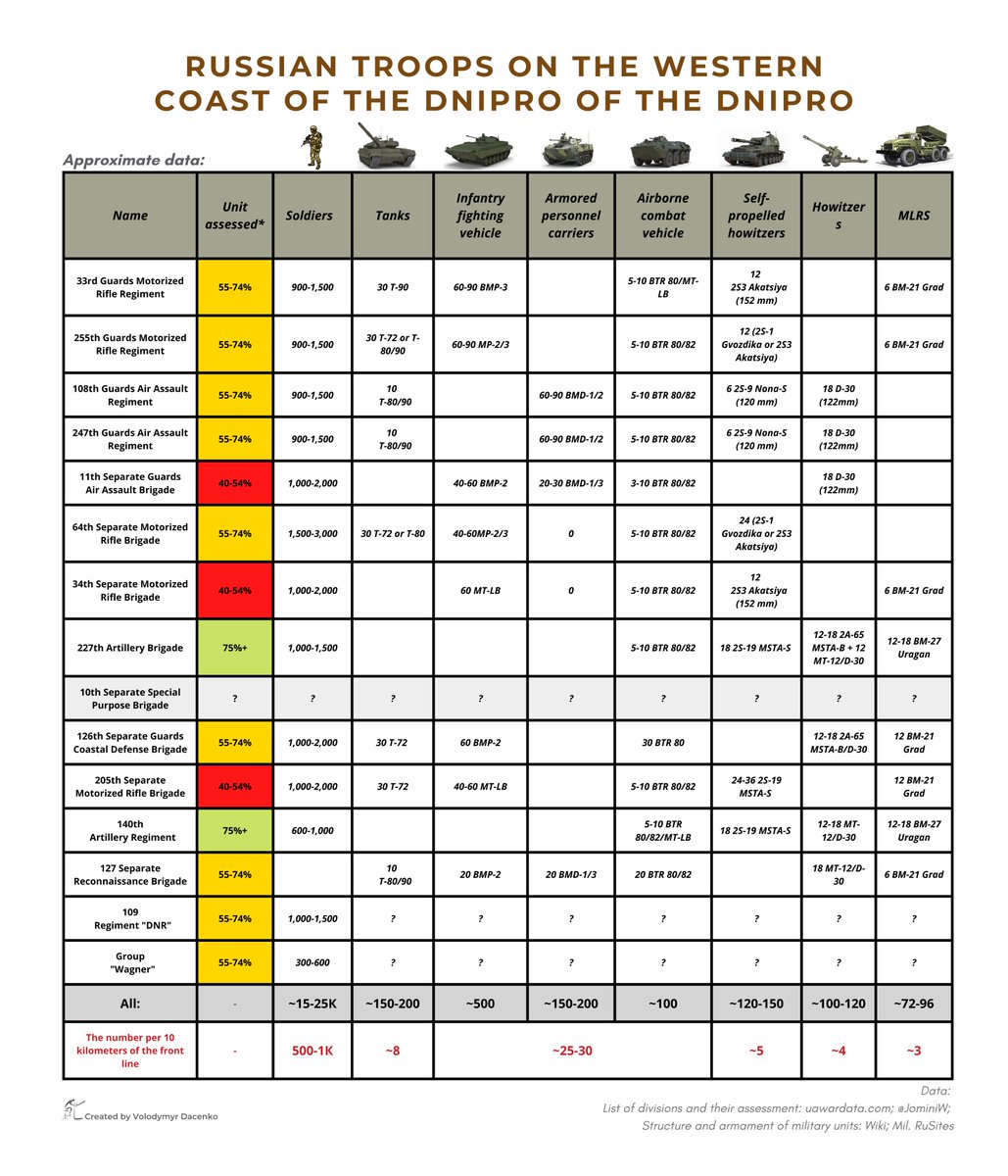
The number of weapons that the West has/supplies to Ukraine
How many Western countries have weapons and how many of these weapons were transferred to Ukraine during the 8 months of the war?
1/17
#russianinvasion #UkraineRussiaWar #Artillery #atacmsforukraine
How many Western countries have weapons and how many of these weapons were transferred to Ukraine during the 8 months of the war?
1/17
#russianinvasion #UkraineRussiaWar #Artillery #atacmsforukraine

2/17 NATO transferred 1.4-3.6% of its heavy weapons systems to Ukraine. The highest percentage is for artillery - about 3.6%.
3/ The need for artillery remains the most acute because Ukraine has minimal stocks of shells for Soviet artillery systems of 122/152mm caliber.
The transition to NATO artillery began in April. And in half a year, Ukraine received about 400 artillery systems of 105/155mm caliber
The transition to NATO artillery began in April. And in half a year, Ukraine received about 400 artillery systems of 105/155mm caliber
4/17 The US transferred the most systems - about 200 units. But this country also has the largest reserves of artillery among NATO countries. The total number of artillery in the US arsenal and stores: 1,523 self-propelled guns, 2,151 howitzers, 800 HIMARS, M270, and ATACMS
5/17 The Czech Republic and Great Britain became the most generous suppliers of artillery. The Czech Republic transferred about 40% of all its artillery systems to Ukraine. Great Britain - 25%.
6/17 NATO countries transferred about 1.4% of their armored vehicles to Ukraine. Here, too, the largest supplier is the USA - more than 1,140 units. But in relation to its stockpile of weapons, this is 0.8% of all armored vehicles that the United States has.
7/17 The Czech Republic appears to be Ukraine's most loyal ally in supplying its weapons. She transferred 30-40% of all the systems she had.
8/17 It is worth paying attention to how the role of Germany in the supply of weapons has changed. If at the beginning of the war this country refused to supply heavy equipment. Now its role is quite high and Germany transfers a large part of what it has.
9/17 However, among NATO members, not all countries are in a hurry to transfer heavy weapons. For example, the most armed NATO countries include Turkey, Greece, and Romania.
I did not include the weapons that Turkey sells to Ukraine here, because this infographic is about aid.
I did not include the weapons that Turkey sells to Ukraine here, because this infographic is about aid.
10/17 Greece is one of the largest operators of armored vehicles and artillery. More than 1,200 tanks and 1,200 artillery systems. Moreover, these are the systems that other countries transfer to Ukraine - the M109 and PzH 2000 self-propelled guns, the RM-70 and M270.
11/17 Greece delayed the delivery of 40 BMP-1 for four months because it insisted that Germany should first supply it with the Marder IFV in order not to "weaken the defense capability" of its army. At the same time, Greece has more than 1,800 IFV M113.
12/17 Against the background of which, 40 old BMP-1 are unlikely to affect the country's defense capability. defence-ua.com/army_and_war/b…
13/17 Romania is the largest operator of MLRS M270 in Europe - 54 systems. But none was supplied to Ukraine. In general, this country has so far limited itself to supplies of ammunition and small arms.
14/17 Deliveries of heavy weapons are not the only military aid that Ukraine receives. Western allies also give UA shells, ammunition, portable systems, small arms, military uniforms, and more.
15/17 But now Western heavy weapons systems are gaining more and more importance on the battlefield. They are gradually replacing damaged and worn-out Soviet equipment that cannot withstand intense, prolonged battles.
16/17 Ukraine's transition to NATO arms in this war is inevitable. But NATO itself will have to look more and more into its stocks and plan new orders for the production of modern weapons. After all, this war showed that only force can guarantee peace.
17 About data: @oryxspioenkop, The Military Balance, The Kiel Institute
docs.google.com/spreadsheets/d…
docs.google.com/spreadsheets/d…
• • •
Missing some Tweet in this thread? You can try to
force a refresh










